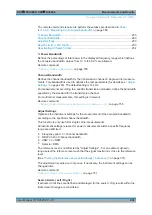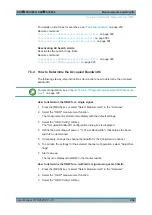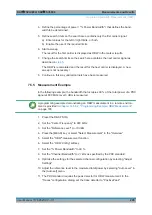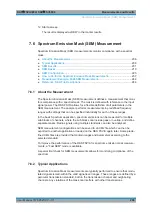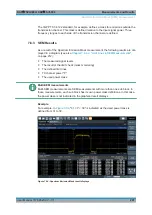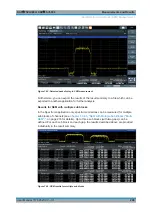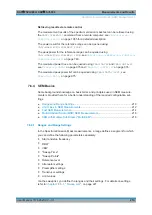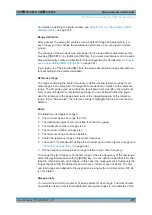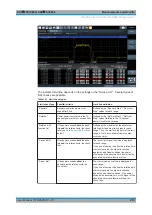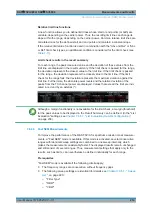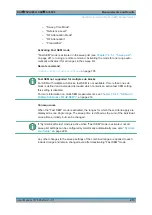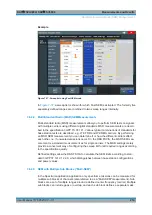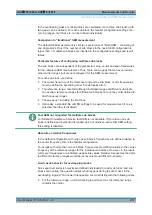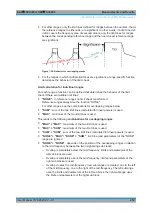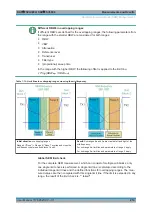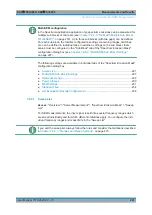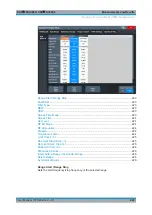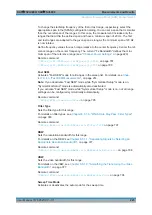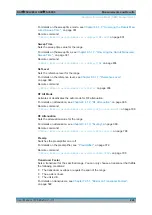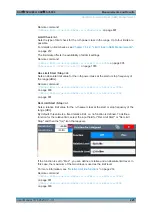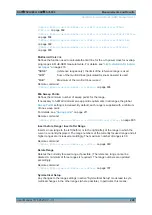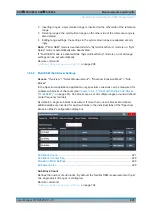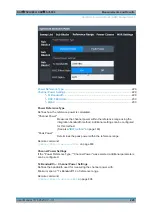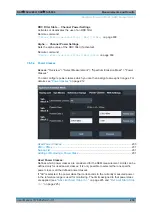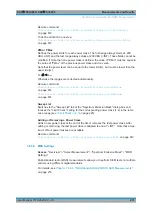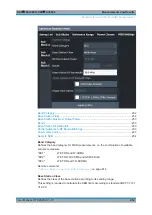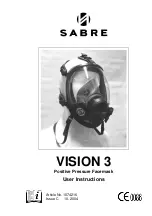
Measurements and Results
R&S
®
FSVA3000/ R&S
®
FSV3000
217
User Manual 1178.8520.02 ─ 01
In the overlapping masks, multi-limit lines are calculated. Up to three sub blocks (with
two gaps) can be defined. For each sub block, the familiar configuration settings con-
cerning ranges, limit lines etc. can be defined individually.
Comparison to "traditional" SEM measurement
The default SEM measurement is simply a special case of "
Multi-SEM
" - consisting of
one single block. Only if the number of sub blocks in the basic SEM configuration is
larger than 1, multiple sub blocks are inserted in the configuration settings and result
tables.
Particular features of configuring multiple sub blocks
The sub blocks are independent of the global start, stop, center and span frequencies
for the complete SEM measurement. Thus, there can be gaps that can even include
other carrier ranges, but are not configured for the SEM measurement.
For each sub block, you define:
●
The center frequency of the reference range of the sub block; center frequencies
must be defined in ascending order for sub blocks A,B,C
●
The reference range; note that although individual ranges of different sub blocks
can overlap, reference ranges for different sub blocks can
not
; they must define dis-
tinct frequency ranges
●
The sweep list, including the limit lines
●
Optionally: a standard file
or
MSR settings to be used for measurement (if one is
selected, the other is disabled)
Fast SEM not supported for multiple sub blocks
For SEM with multiple sub blocks, fast SEM is not available. If more than one sub
block is defined and a standard is loaded which contains an active fast SEM setting,
this setting is disabled.
Absolute vs relative frequencies
In the default configuration with only one sub block, frequencies are defined relative to
the center frequency; this is the familiar configuration.
For setups with more than one sub block, frequencies are defined relative to the center
frequency of the reference ranges for the individual sub blocks. However, in the result
summary, frequencies are indicated as absolute values. Relative frequencies that refer
to different reference ranges would be inconvenient and difficult to analyze.
Limit check behavior for overlapping masks
Since spectrum emission masks are defined individually for each sub block, and sub
blocks can overlap, the question arises what happens during the limit check in the
overlapping regions? To answer this question, we must distinguish the following cases:
●
For the reference range, no limit checking is performed, as the reference range
contains the carrier
Spectrum Emission Mask (SEM) Measurement

